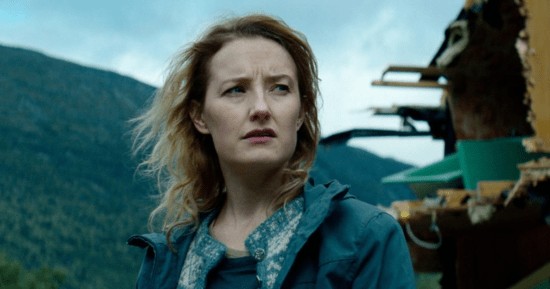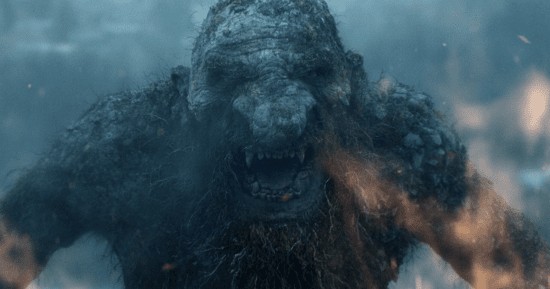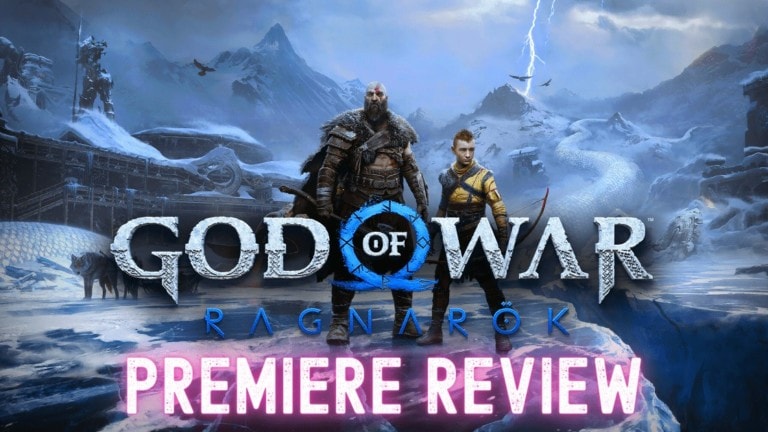Review Netflix’s “Troll” Is A Fantastic Nordic Folklore Film

Serving as an adaptation of Nordic folk tales, Netflix’s Troll film has received a lot of positive reviews. What’s really interesting is that this film’s creation took almost twenty years, because that’s how long its director Roar Uthaug thought about it. Should you start up Netflix and check it out? Read on to find out what I think!
[Warning: Spoilers from Netflix’s Troll are below!]
Not the friendly long-haired Trolls you may be thinking of…
Let’s just get this out of the way, this is in no way connected to those cheerful, long-haired, singing Trolls from those animated movies and childhood collections. This movie is based on old Nordic folklore, which I will get into more about later.
The whole Troll story feels at times like an adaptation of King Kong or Godzilla, where people discover a large creature that destroys everything in its path. Although the filmmakers have made it an action and fantasy film, elements of horror can also be seen in it. While watching, you can spend those almost two hours in full suspense, or you can just watch those beautiful Scandinavian views around you because you’ll still understand what’s going on in the movie.
The film focuses primarily on our main characters Nora Tidemann (Ine Marie Wilmann), Andreas Isaksen (Kim Falck) and Kris Holm (Mads Sjøgård Pettersen). The monster itself serves more as a backdrop for the whole story and an obligatory element for its perfect ending.
After the deaths of protesters near the Dovre mountains, the Norwegian government, unsure of what happened, contacts Nora, who is a paleontologist. The accident was a great mystery because people in the government were not sure what had happened, but Nora had several theories. The only one that fit the description of the event was a traditional Norwegian folk mythical tale about trolls, which she discovered with the help of her father Tobias (Gard B. Eidsvold).

Like any ordinary person, they didn’t believe the stories until they saw the troll in person. The action taken against the creature is to send the army to attack and take it over. But as in any film of this type, this is not the solution to the problem. The monster becomes angrier and starts destroying most of the environment around it.
In its path is Oslo, Norway’s capital. The city is being evacuated, and the only plan the government is willing to carry out is to set off an atomic bomb on Oslo, as they believe this is the only way to kill the troll. When Andreas and Nora found out about this, they refused to participate. Andreas resigns from his position as an advisor to the prime minister and decided to help Nora find the truth about the creatures.
Old records from Nora’s father led them to the Royal Castle, where they learned the truth about trolls from the head of the court, Rikard Sinding (Bjarne Hjelde). We learn that groups of trolls lived in Norway in the past, and all those green areas, caves, mountains, and lakes belonged to them. Olso was special to the creature, as it considered the city its home. We learn of a bloody past there due to Christians who massacred entire groups of trolls, as well as the family of this troll, who was left to die in a cave in the Dovre mountains.
Nora and Kris discovered that trolls are very sensitive to the sun, so they exposed him to UV rays by placing the skull of one of the troll children near the trap. The nuclear strike is stopped, and Nora decides not to kill the troll, as she puts herself in its place and imagines how she would react if she found out her entire family was dead. Unfortunately, the creature’s exposure to UV radiation was far too long, and the first rays of the sun killed them.

While other people are happy and rejoice at defeating a troll, Nora and Andreas conclude that there must be other trolls still alive in the mountains. An after-credit scene teases that this is true, and one troll rumbles from under the rocks, teasing a possible sequel.
Adapting Scandinavian legends is perfect idea for the future
In Norwegian folklore and mythology, Trolls are among the most popular mythical creatures depicted in their pop culture, legends, folk tales, and more. They’re described as creatures that live in hiding among rocks, mountain caves, and uninhabited places in small groups. Their description, which is different from pop culture, says that the trolls are not as friendly to humans as one might have assumed.
Descriptions of their appearance and behavior can vary depending on the source, but the bottom line is that they can either be ugly as hell and dumb or look like humans and live among us while behaving just like any of us. These folk tales sound really scary and generally, things don’t go well for any person who sees a troll of legends.
Troll became a hit in a matter of days just by adapting an old Nordic folk legend. This definitely shows that there is a lot of potential in creating more films or even series that solemnly focus on myths or legends from Scandinavia. Other interesting and scary creatures in Nordic legends are Elves, Huldras, Krakens, Selmas, Nattmaras, Dwarves, Nøkkens, Storsjöodjurets, and more.
Production companies could easily make a horror film, a teen drama, a comedy, or even a historical film with fiction elements out of this kind of folklore. I can imagine series or films about Scandinavian legends on Netflix directed by Roar Uthaug in the future like Troll.
Troll is a very scary, engaging, and effective film that decides to tell us stories from legends in modern times. Uthaug has created a spectacular film that has further solidified my love for Scandinavian cinema. Troll should certainly help Nordic folklore break through to the mainstream and help people discover more Scandinavian cinema.
My rating for this film:
★★★★½ / ♥♥♥♥
Troll is now available to watch on Netflix. Have you seen it? Did you like it? Let us know on Twitter and our social media.



